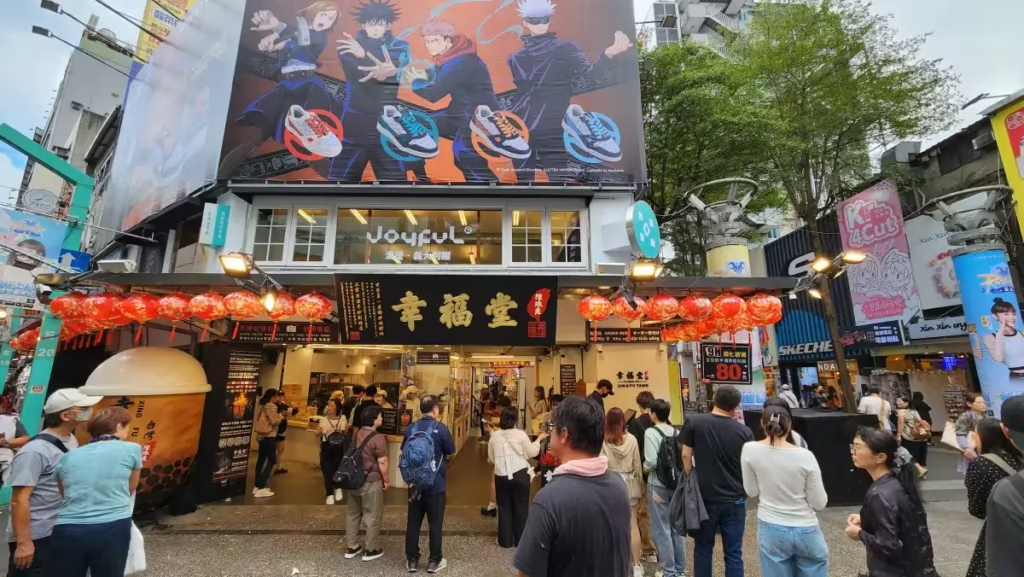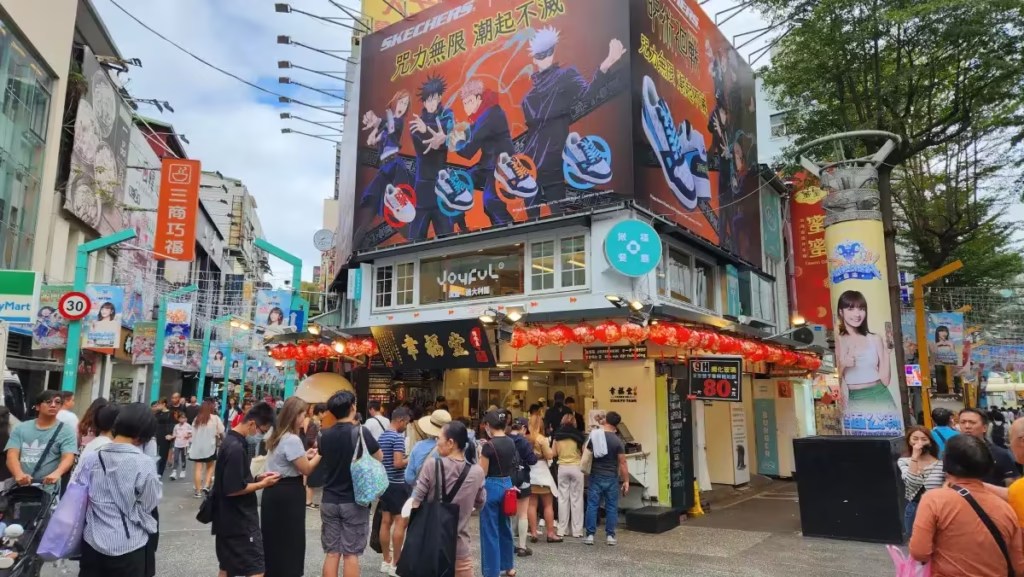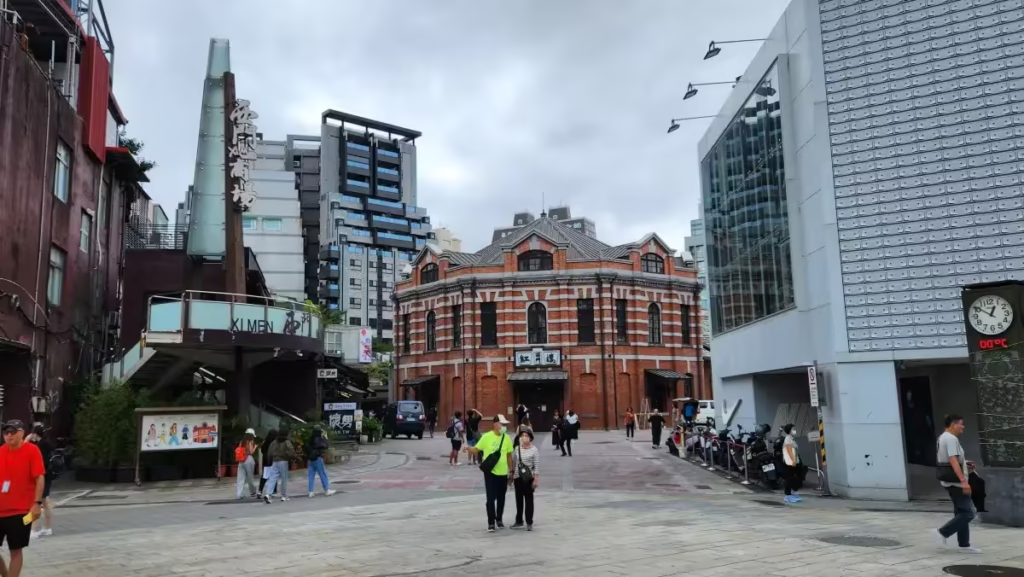Table of Contents
Toggle10 Days in Taipei

TAIPEI
I choose November to visit Taiwan, the weather and the temperature was the main reasons, technically at this period of the year the temperatures are very mild and the typhoon season is over, the typhoon season end in October, but exceptionally this year the last typhoon was the last week of October, just 1 week before my arrival, lucky at the time of my trip, all transportations, trains and planes was reestablished on time.
When you arrive in Taiwan Taoyuan international airport, Taipei. This airport is about 45 minutes from Taipei city center.
How to Get to Taipei.
To go to the city center, there is different options, the taxis but they are expensive, you have to expect NT$1500 Taiwanese, around $US 45.
The second is the bus, the cheaper version but take longer, I personally choose the train, cost NT$150, $US 4.5, if you take the express(the purple train) is about 35 minutes trip or if you take the commuter train, (the blue train) it takes about 50 minutes, he stop every station, both are the same price.
If you are taking the train, you will arrive at the metro station.
Because they are two different system, managed by two different company, you have to buy a metro token to your final destination.
How the Metro system and transportation system works in Taiwan?
Getting around Taipei.
TRANSPORTATION:
The Taiwanese transportation system is excellent.
The best way to use the transportation system, is to buy the easy card, for that you have to buy the card NT$100, ($US 3.5).
This $100 is not refundable, then you have to fill your card with the amount you need, you can refill your card in any metro station, seven eleven store.
At the end of your trip any money left on your card is refundable, you can have a refund in any metro station, but the first NT$100 are not refundable, you can keep your card for a next trip if you plan to go back or keep as souvenir.
Two very important points, the first one is the easy card can be used for the metro, buses even the local trains everywhere in Taiwan, and this is so convenient, but not for the reserved trains
The second one is when using the card, make sure you tap the card when you get on buses, metro or trains but you have to tap also when you get out, otherwise your card will be blocked.
The metro (MRT) fare is depending your direction, below the maps of the Taipei metro system.
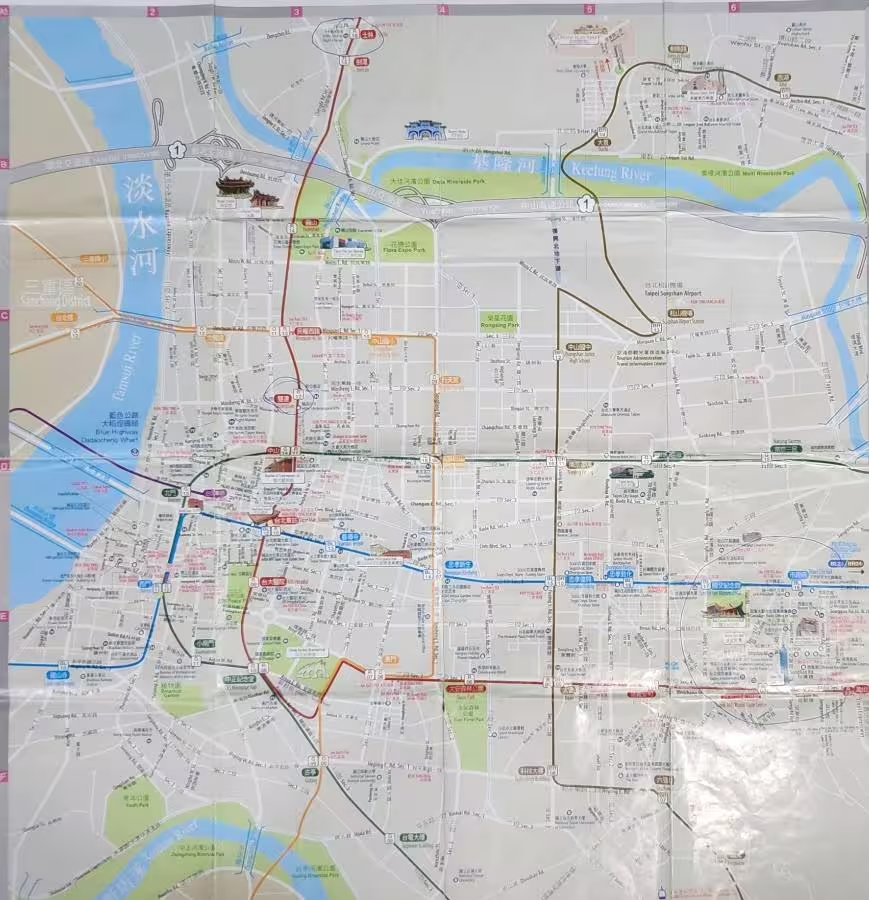
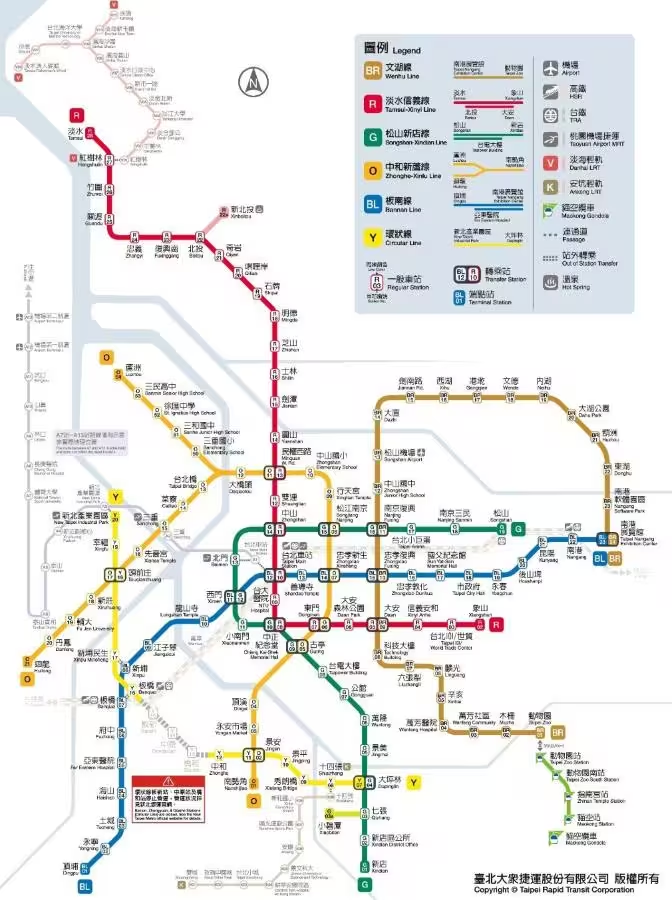
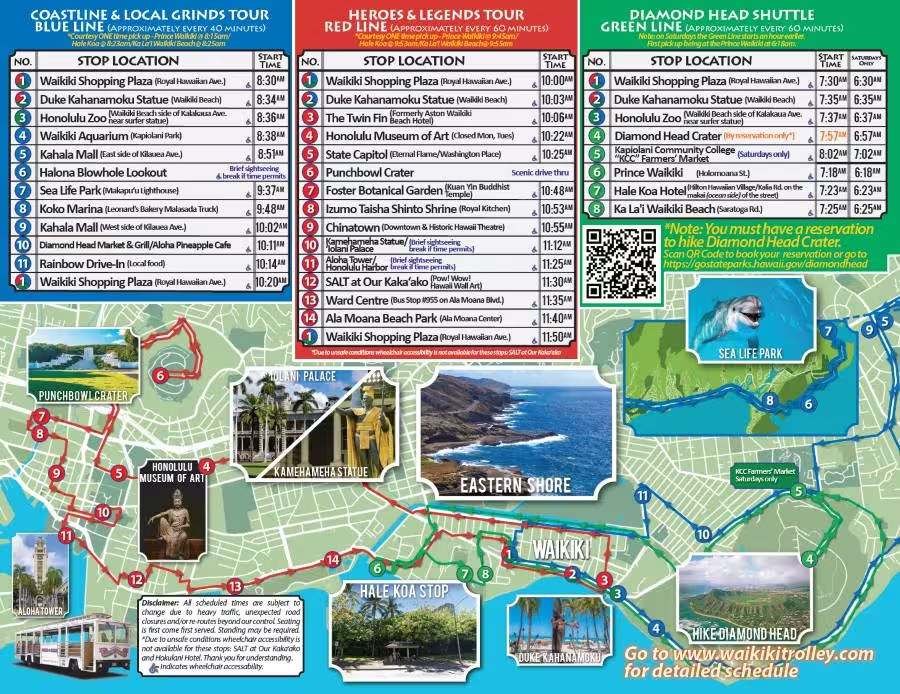
The first map number in the center is the price to go this destination and the second map is the station number, i.e. bl10, means blue line station 10.
There is another way to move around in Taipei is by using the hop on hop off buses.
In Taipei there is 2 lines, the red line and the blue line.
The red line is basically on the south of Taipei and in city center, the blue line is more on the west part and north.
The 24 hours pass is NT$ 660, US$20, and the day time NT$ 550, US$17, with the same ticket you can use both line.
I recommend to do the blue line first since they have shorter schedule, the last bus is at 5:44pm, the red one run until 9pm.
Put the map and website
Where to stay in Taipei.
There is plenty of hotels in Taipei, I recommend to find one close to a metro station, and the best way to visit Taipei is by using the public transportation and by walking.
I slept at the Yomi hotel MRT Shuanglian Station.
Very good location, is only 2 metro station from the main station, where all trains, metro and some buses start their journey.
The Yomi hotel is at Shuanglian metro station on the red line R11 or green line G14, the hotel is just 2 block from the metro station.
The front desk staff is very helpful, just make sure you don’t have the room 201, is not a very nice room, that’s the one I get when I arrived, I asked to change , without problem they give me the room 301 which was a nice room.
This hotel is not a 5 stars hotel but very convenient, in the hotel you have laundry facility, even a family room where you can eat if you buy outside food, there is no restaurant at the hotel.
The Ningxia night market is just few blocks away, also across the metro station every morning there is a local market where you can buy fruits, vegetables and even some cooked and uncooked meat, there is lots of restaurants, coffee shop, bakery and other shops.
EATING IN TAIPEI.
Just across the Shuanglian metro station, very close to the hotel, there is a very good beef noodle soup,
Lao Dong Beef noodle restaurant.
Taiwan is very well known for the famous beef noodle soup.
The Ningxian night market, is one of the oldest night market in Taipei few blocks away from the Shuanglian red line metro station, exit on Minsheng west road, turn on your left and walk for about 5 minutes.
is very interesting market, you can eat a very good goose blood soup, goose intestine, very good and crunchy texture, goose meat nice and tender, also the very popular deep fry squid, very good dish, quail eggs with shrimp, the very common pork hock and more.
The second Taipei night market is the Rahoe street night market, this market is much bigger then the Ningxian, also next to this night market you have possibility to see the Songshan at the entrance of the market and the rainbow bridge, which is just 3 minute walk away.
To get to the Rahoe market, take the metro, green line direction Songshan, all the way to the terminus station Songshan.
The market open at 5pm until 12am.
The Raohe Street Night Market is known for its vibrant atmosphere, characterized by colorful lanterns, lively music, and the enticing aromas of sizzling street food.
The market stretches for about 600 meters and features over 100 stalls, offering a mix of traditional Taiwanese snacks and modern culinary innovations.
The variety available reflects Taiwan’s multicultural influences, with dishes inspired by indigenous, Chinese, and Japanese cuisines.
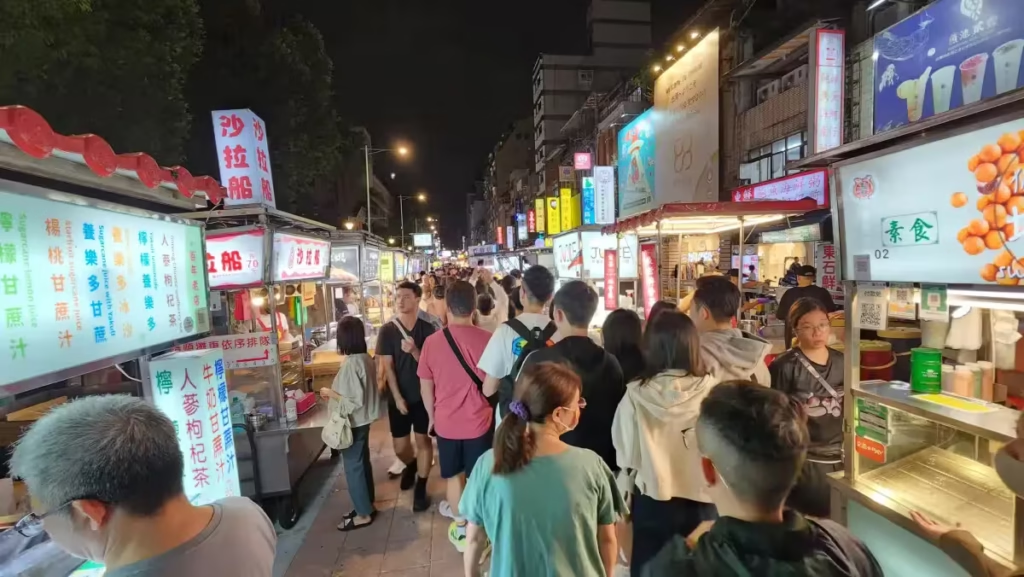
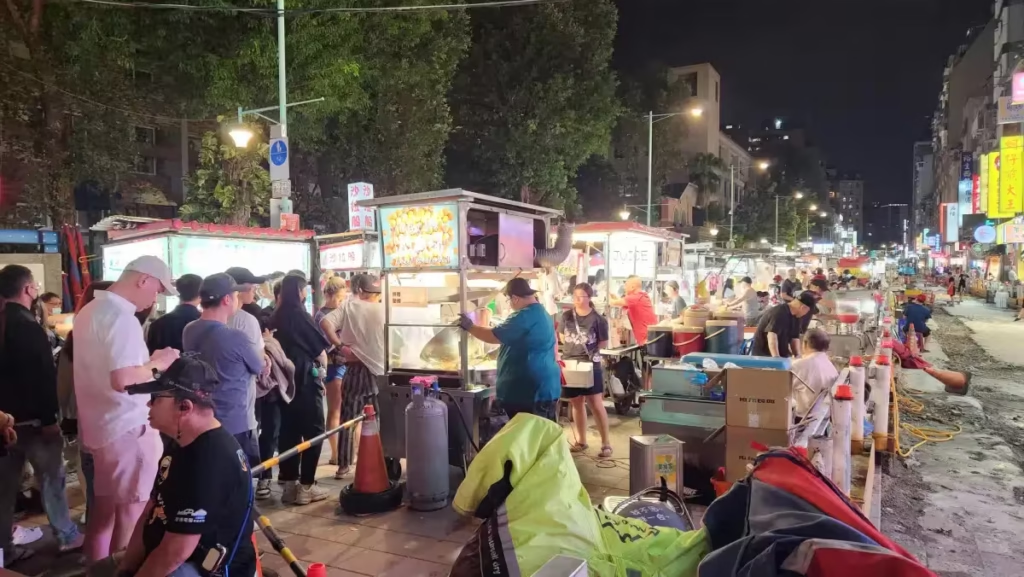
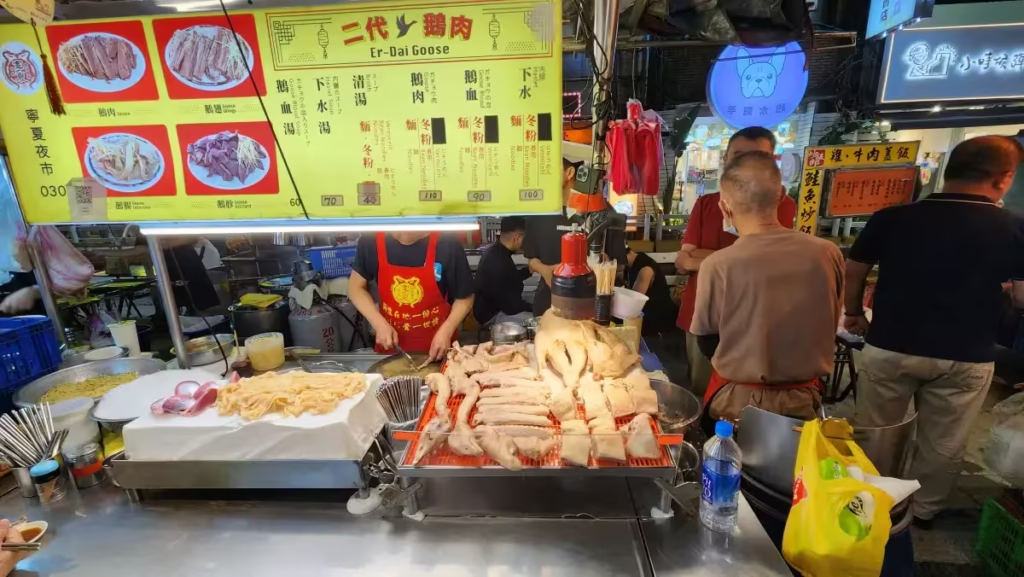
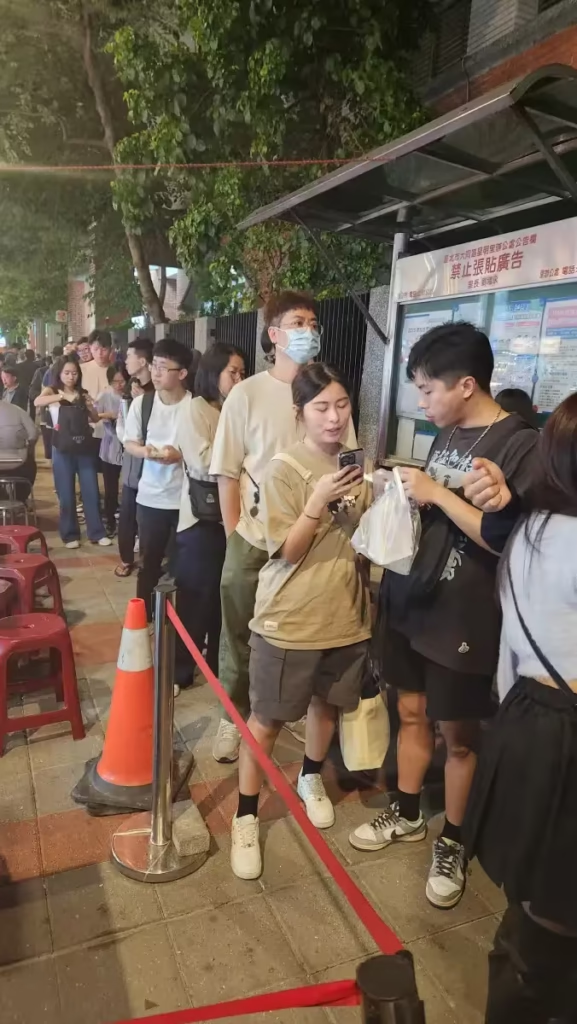
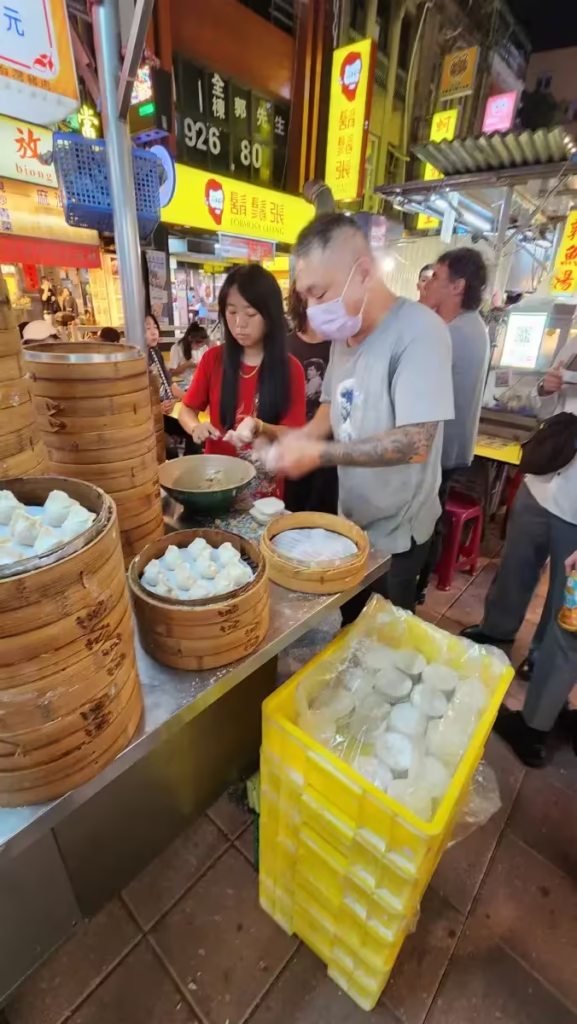
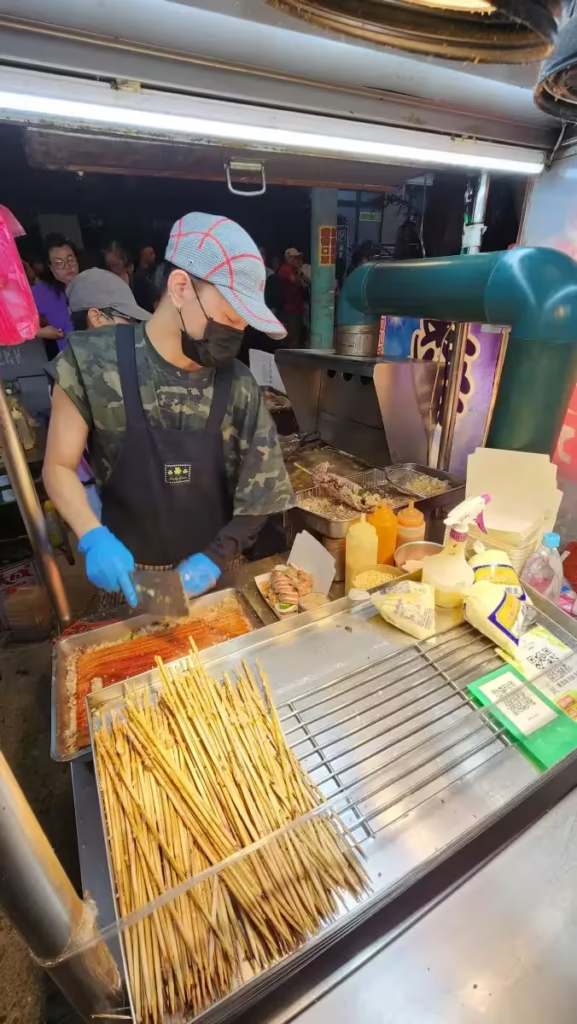

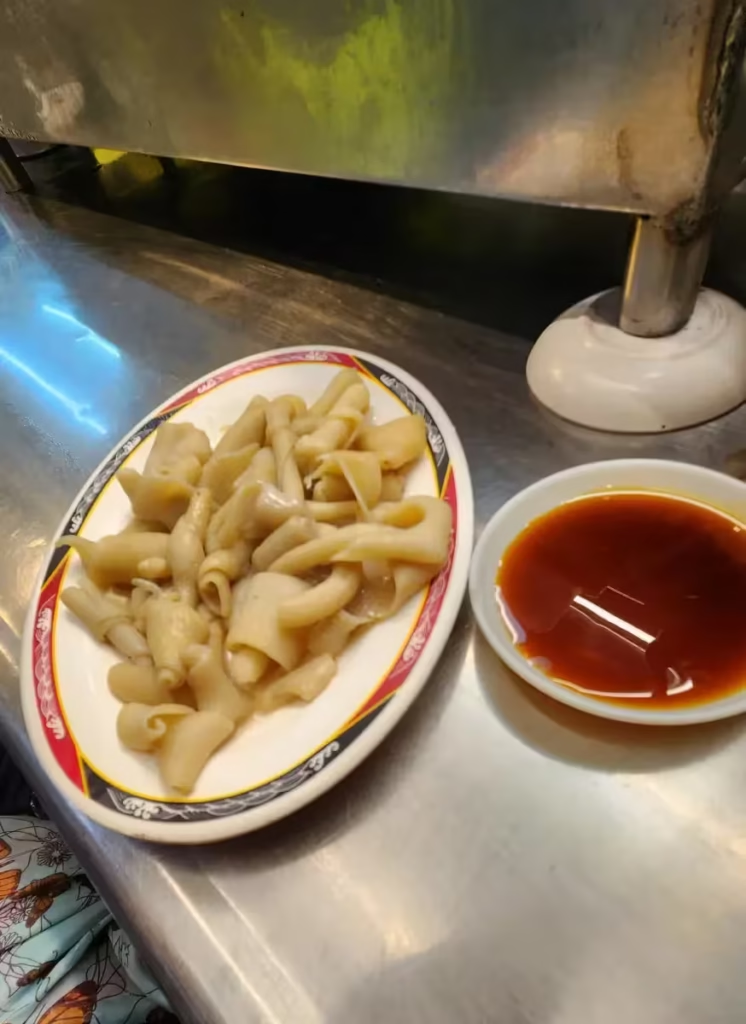
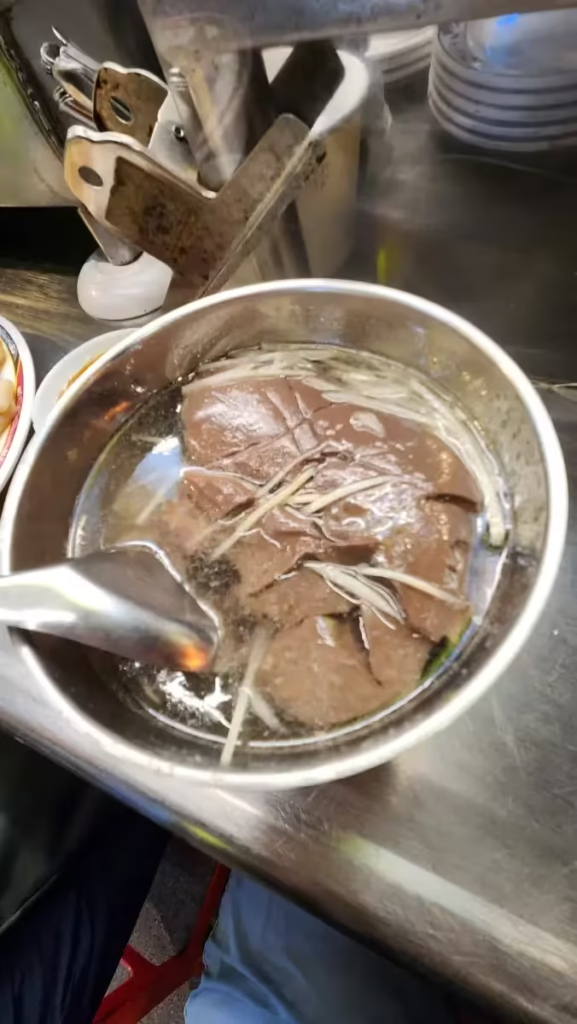
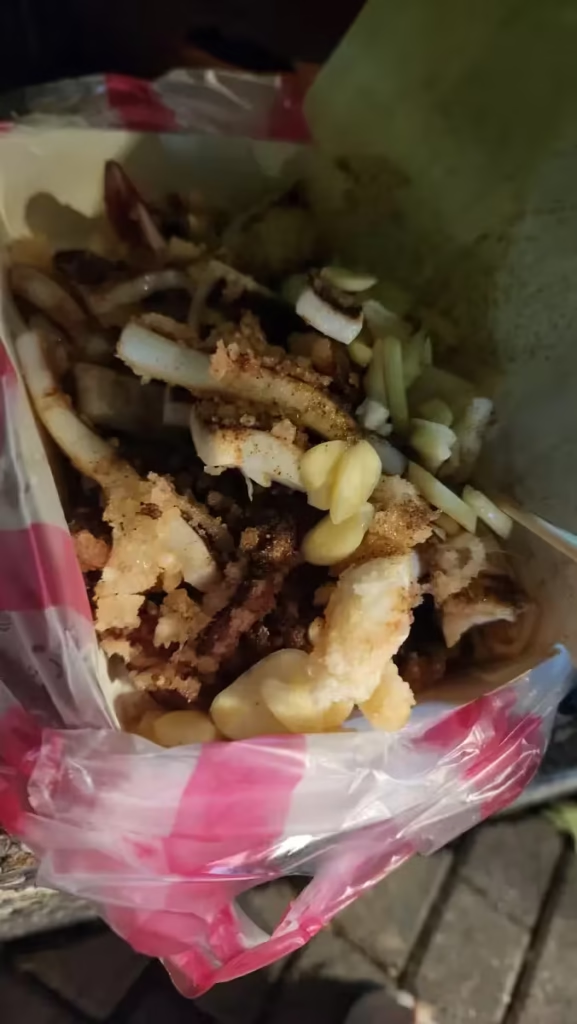
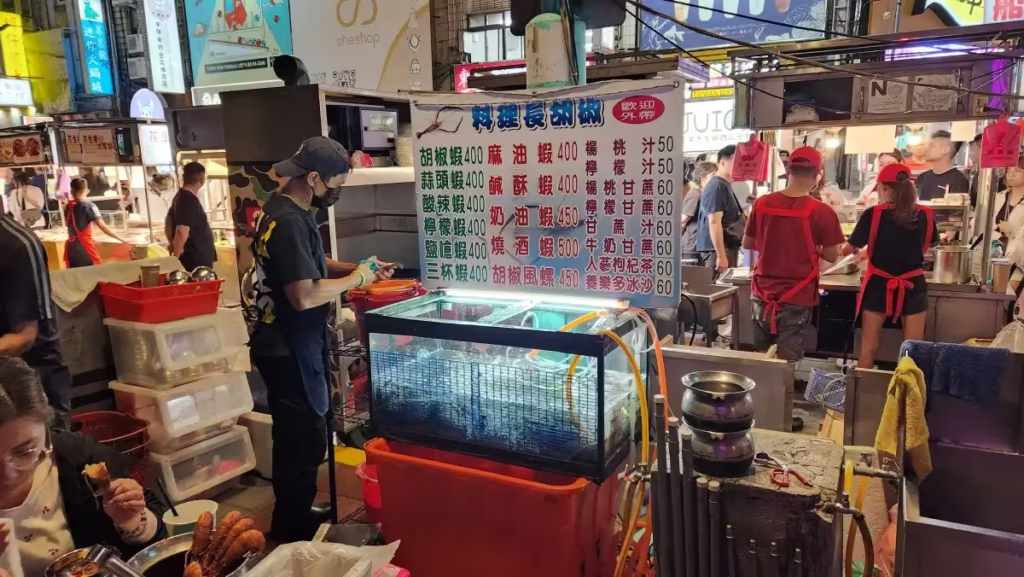
Things to Do.
THE RAINBOW BRIDGE
Getting there
To get to the Rainbow Bridge, take the same line then the Rahoe market, the green line, direction Songshan, exit at the terminus.
Take the little street beside the temple, direction to the river.
The Rainbow Bridge, known for its vibrant colors and stunning design, is a prominent landmark in Taipei.
Located in the Dazhi area of the city, this pedestrian and bicycle bridge spans the Keelung River, connecting the neighborhoods of Dazhi and Neihu.
The bridge was completed in 2009, and is 167m long.
The design of the Rainbow Bridge was conceived by the renowned architect and designer, Dr. Tadao Ando, who is celebrated for his innovative use of light and space in architecture.
Local artists have used its structure as a canvas for murals and light installations.
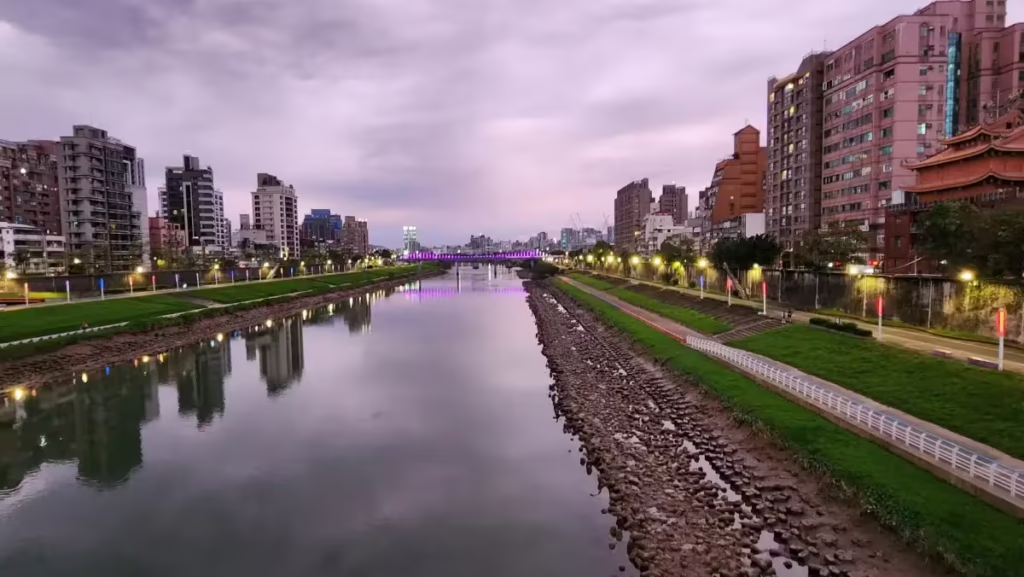
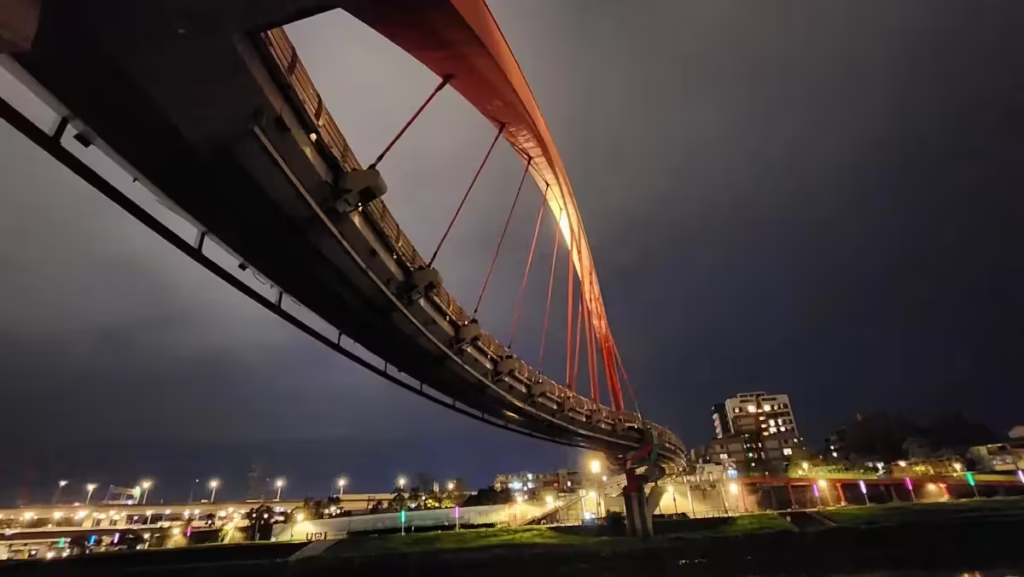

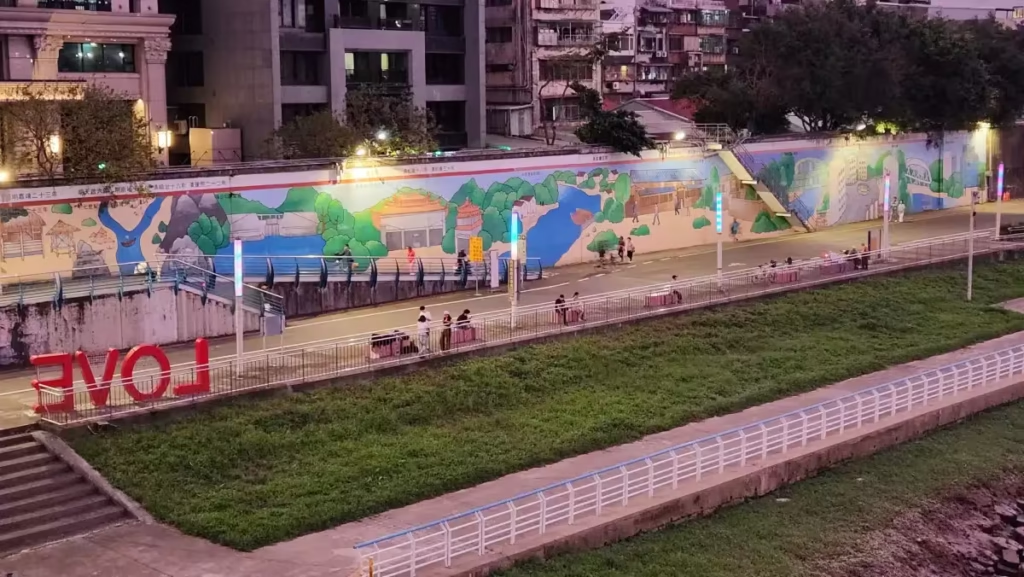
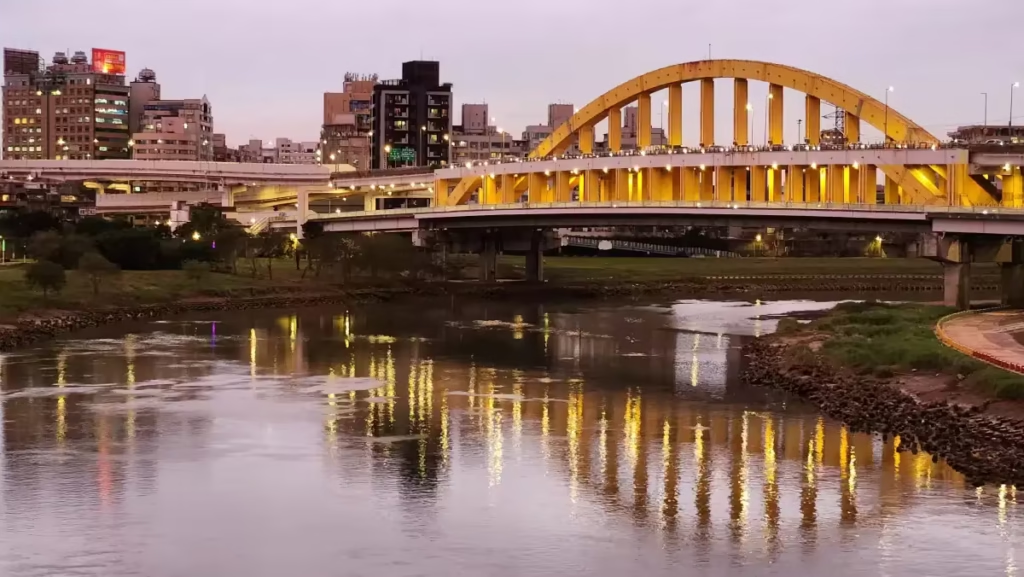
THE NATIONAL PALACE MUSEUM.
To get to the Museum, you can take different buses, but personally I used the hop on hop off bus, the blue line, the stop is just at the museum entrance.
The entrance fees are NT$350, US$12.
History of the National Palace Museum in Taipei
The National Palace Museum (NPM) in Taipei is one of the world’s most renowned cultural institutions, housing an extensive collection of Chinese imperial artifacts and artworks.
The museum’s collection is vast and diverse, comprising over 700,000 artifacts, including paintings, sculptures, textiles, and historical documents. Among its most famous pieces are the jadeite cabbage and the meat-shaped stone, both of which have become cultural icons in their own right.
Its history is deeply intertwined with the tumultuous events of the 20th century, particularly the fall of the Qing Dynasty, the Chinese Civil War, and Taiwan’s political evolution.
The museum’s origins date back to the early 20th century during the Qing Dynasty. In 1925, the National Palace Museum was established in Beijing to preserve the imperial collections of the last dynasty. This collection included precious jade, ceramics, paintings, and calligraphy, reflecting the rich artistic heritage of China.
After the 1949 Chinese Civil War, which led to the establishment of the People’s Republic of China, the Nationalist government, led by Chiang Kai-shek, retreated to Taiwan, bringing with them a significant portion of the Beijing museum’s collections.
In 1965, the National Palace Museum officially opened in Taipei
In the late 20th century, the museum underwent modernization efforts to enhance visitor experience and accessibility. This included the introduction of multimedia guides, interactive exhibits, and comprehensive educational programs aimed at engaging a broader audience. The museum also embraced digital technology, creating online platforms to showcase its collections and reach a global audience.

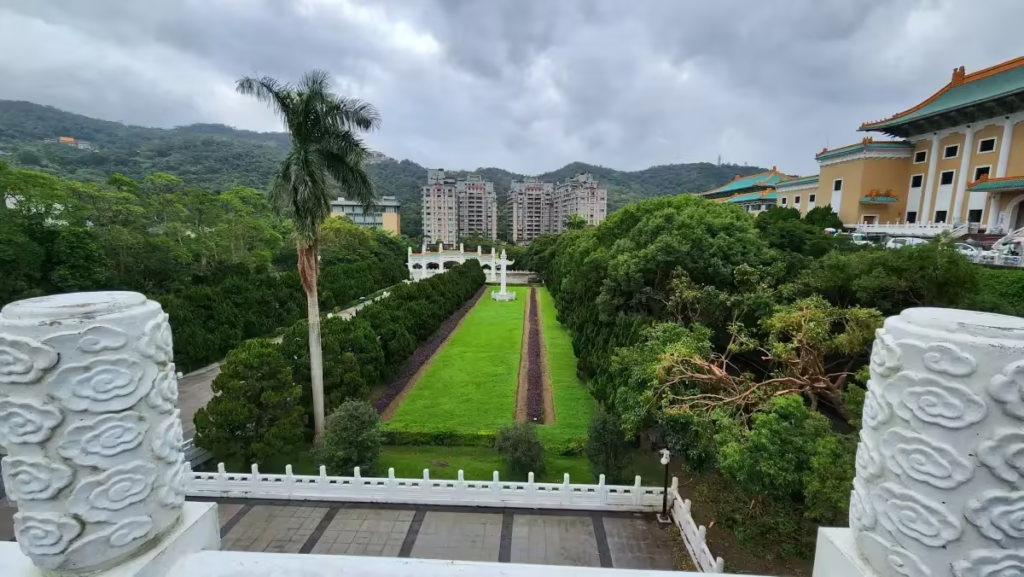
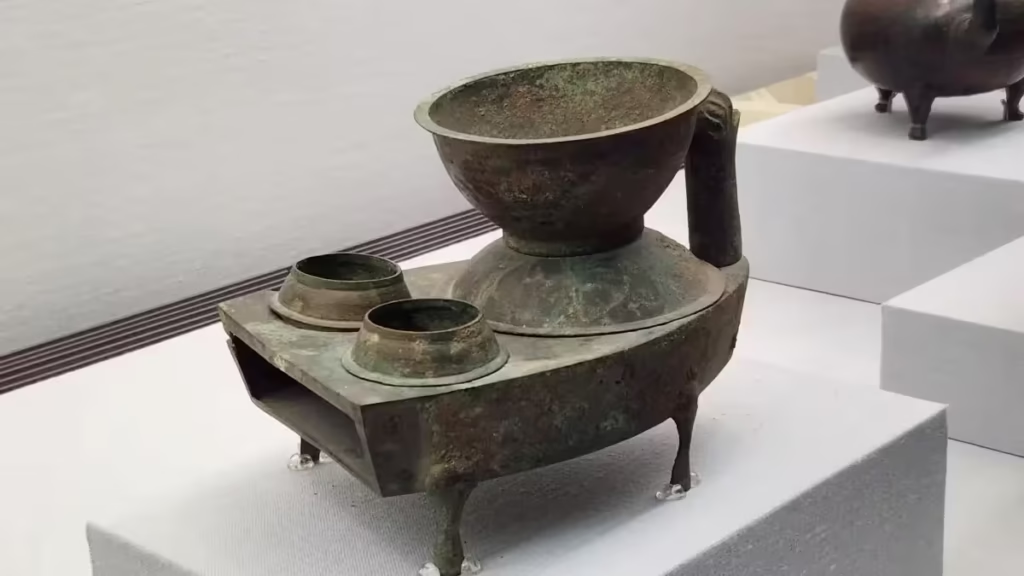
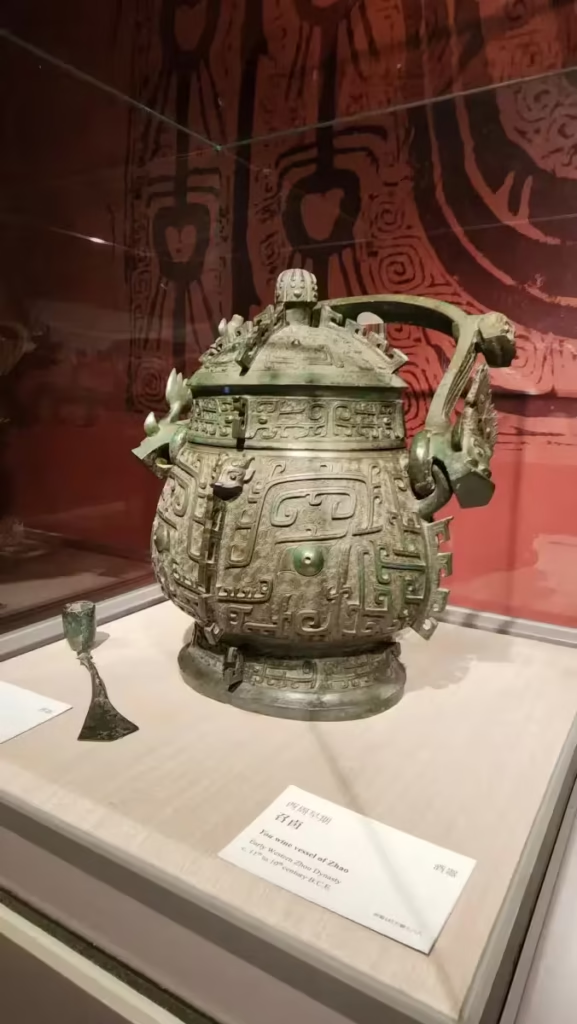
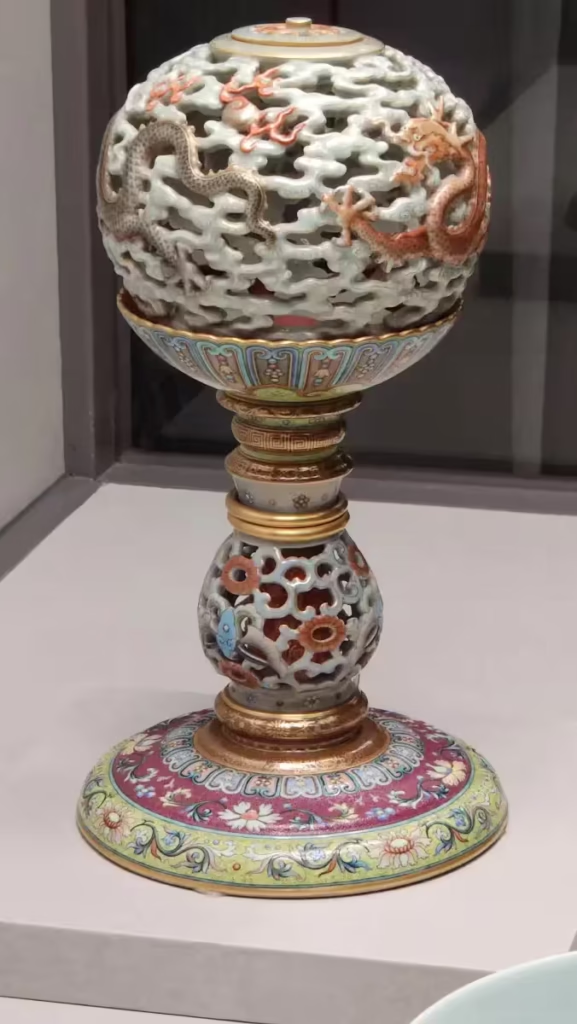
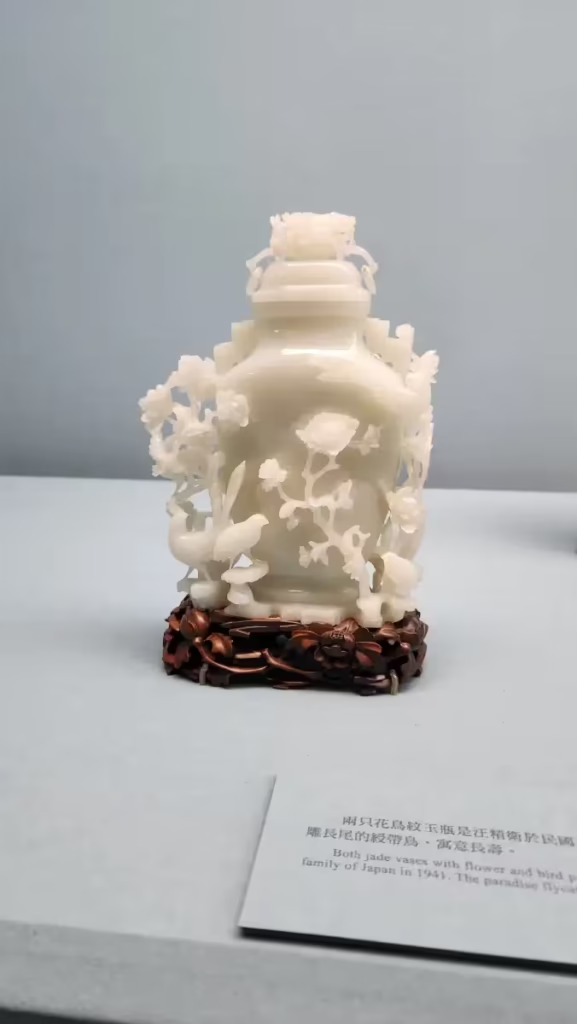
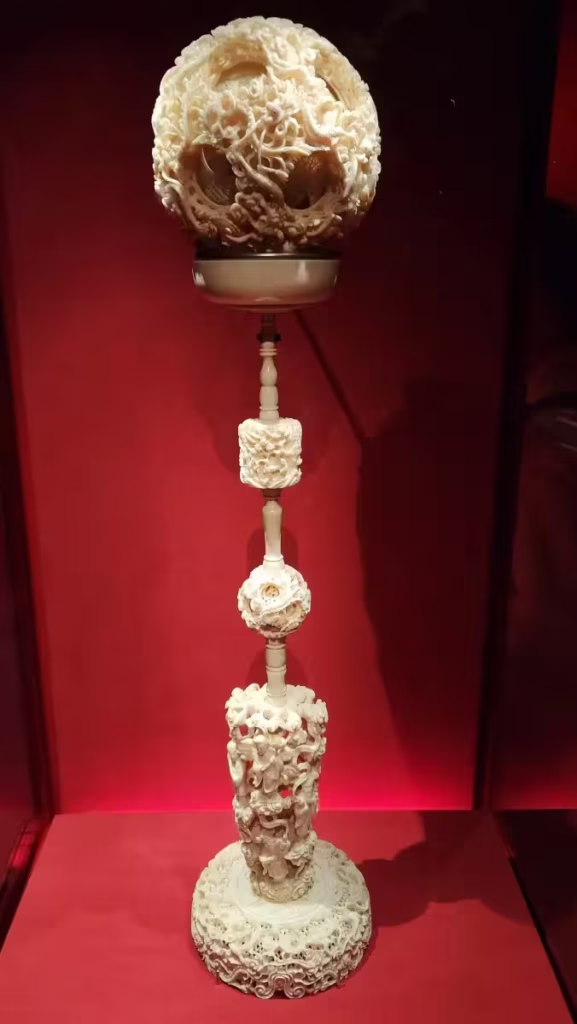
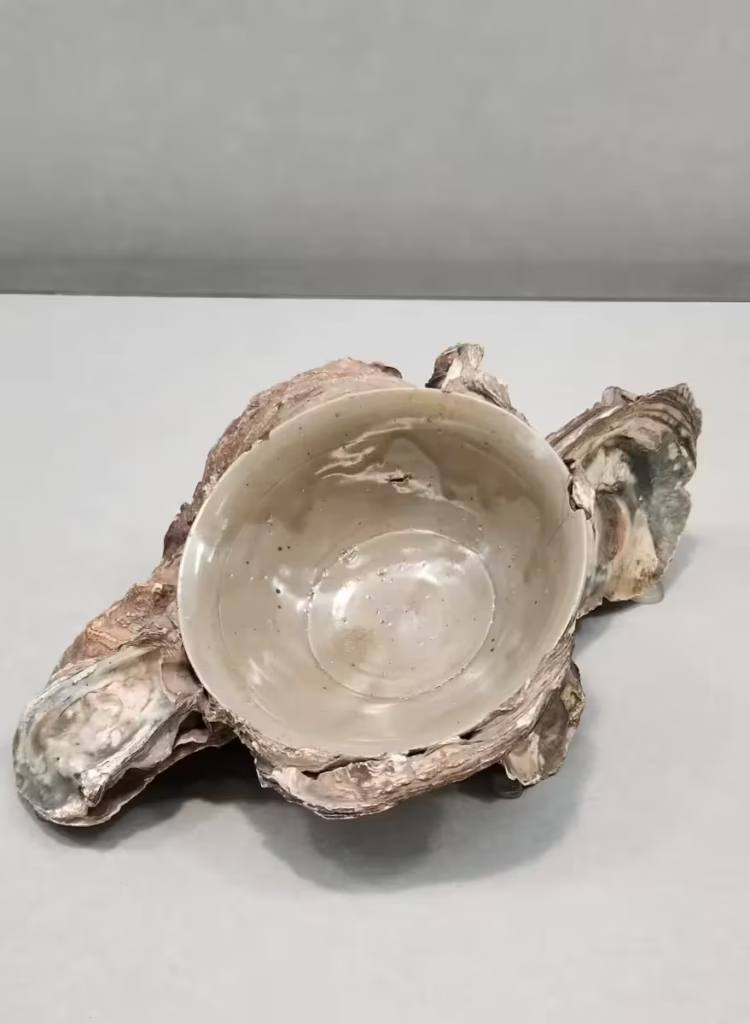
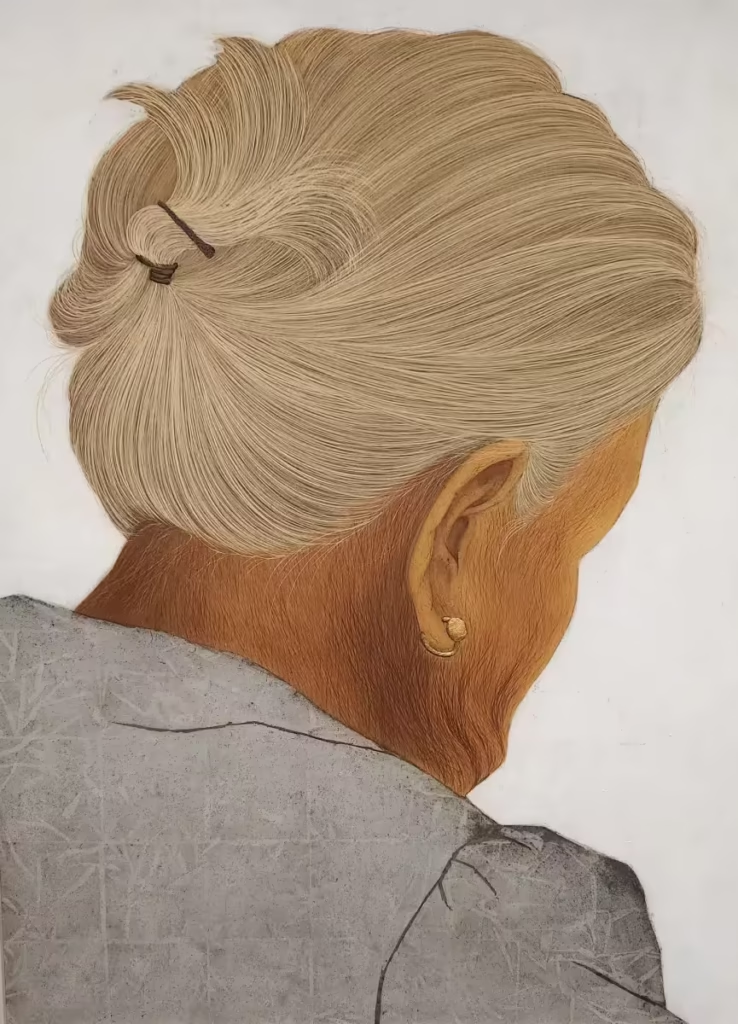
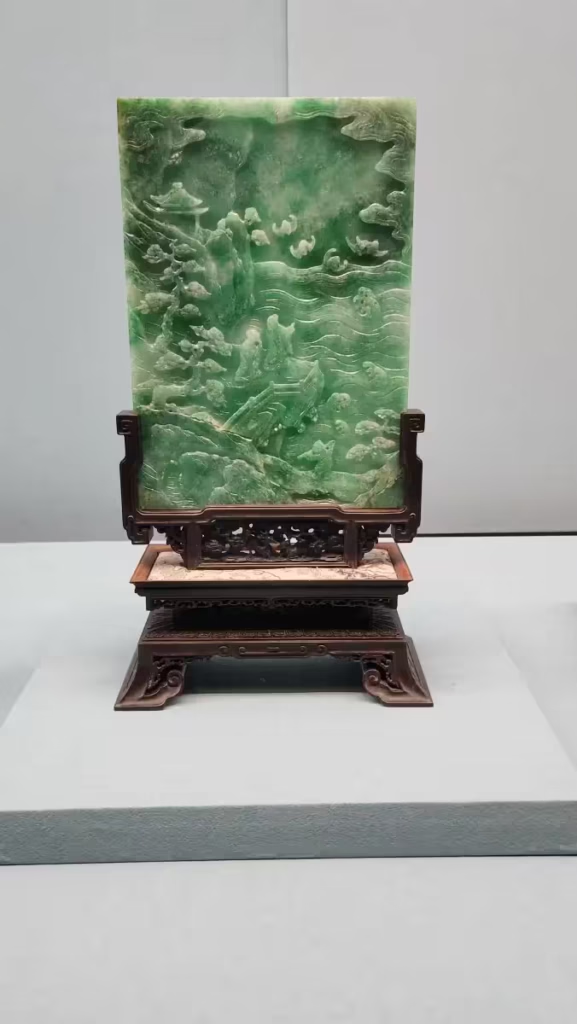
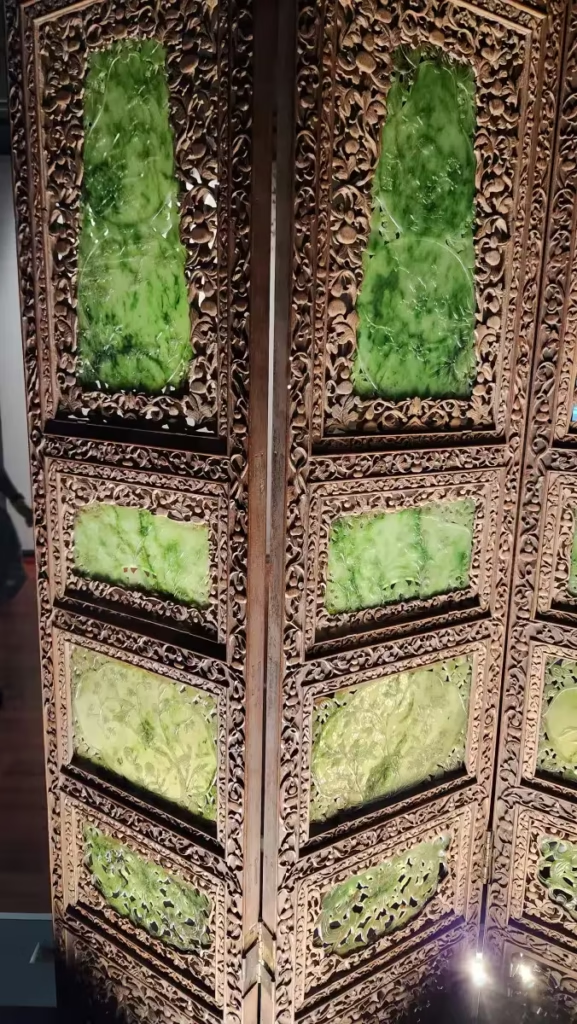
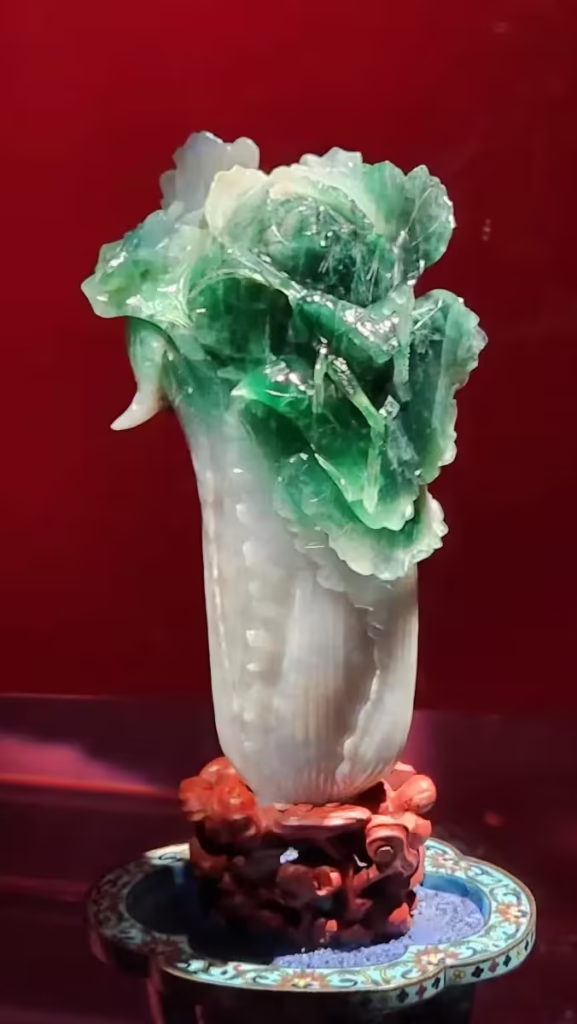
THE LONG SHAN TEMPLE.
The LONG SHAN temple is in WANHUA district at the corner of GUANGZHOU Street and section 1 XIYUANG road.
To get there take the blue metro line Bannan line and stop at bl10 LONG SHAN temple.
To visit the temple, will take about 2 hours.
The entrance is free.
Opening hours from 6am to 10pm, Monday to Sunday.
Established in 1738, this historic temple is dedicated primarily to Guanyin, the Buddhist goddess of mercy, but it also serves as a sanctuary for various deities from Taoism and folk beliefs, making it a melting pot of spiritual practices.
Longshan Temple is renowned for its stunning architecture, which showcases a blend of traditional Chinese styles.
The intricate carvings and ornate decorations reflect the craftsmanship of the era.
The temple features a distinctive roof adorned with dragon motifs, symbolizing power and protection.
As you enter the temple, the atmosphere is filled with the scent of incense and the sound of chanting, creating a serene yet dynamic environment.
The main hall, where worshippers gather, is a focal point of activity, especially during religious festivals when the temple is adorned with lanterns and flowers, and the air is filled with the sounds of traditional music and rituals.
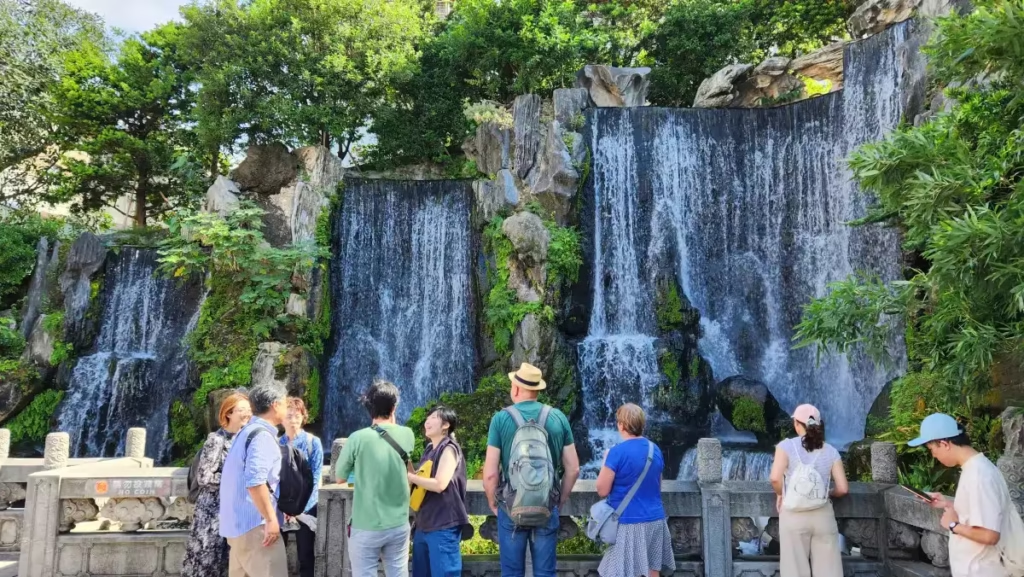
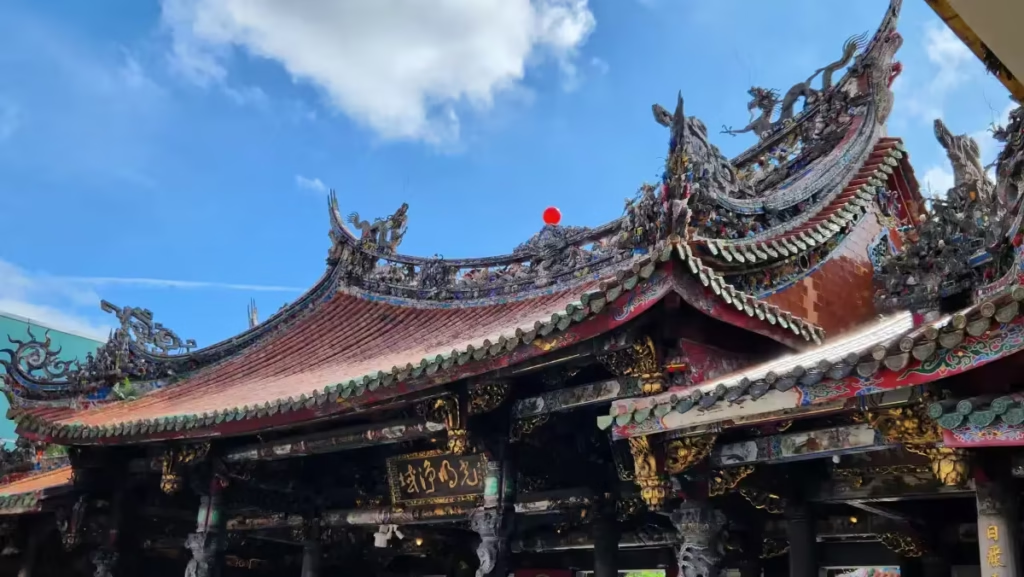
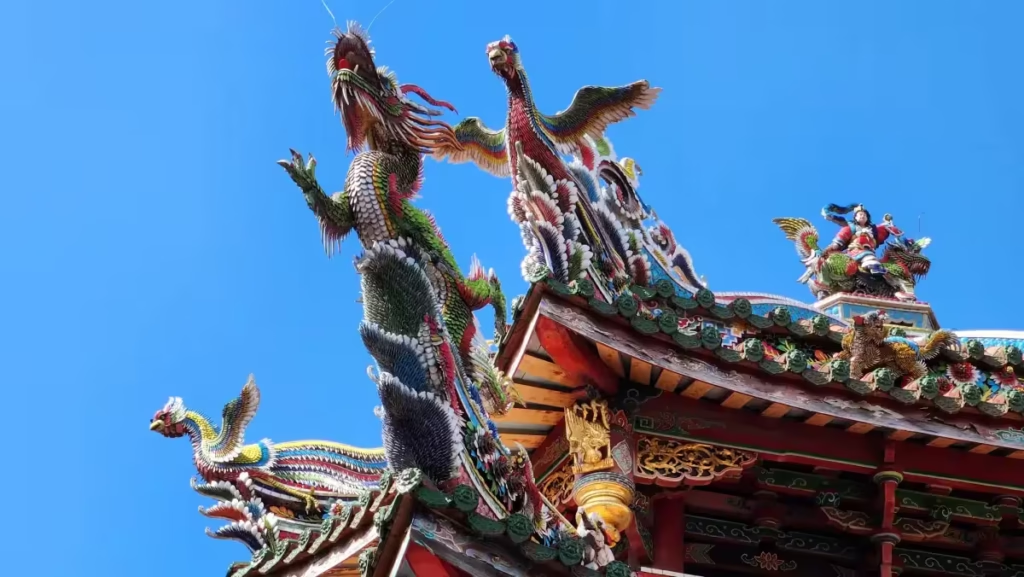

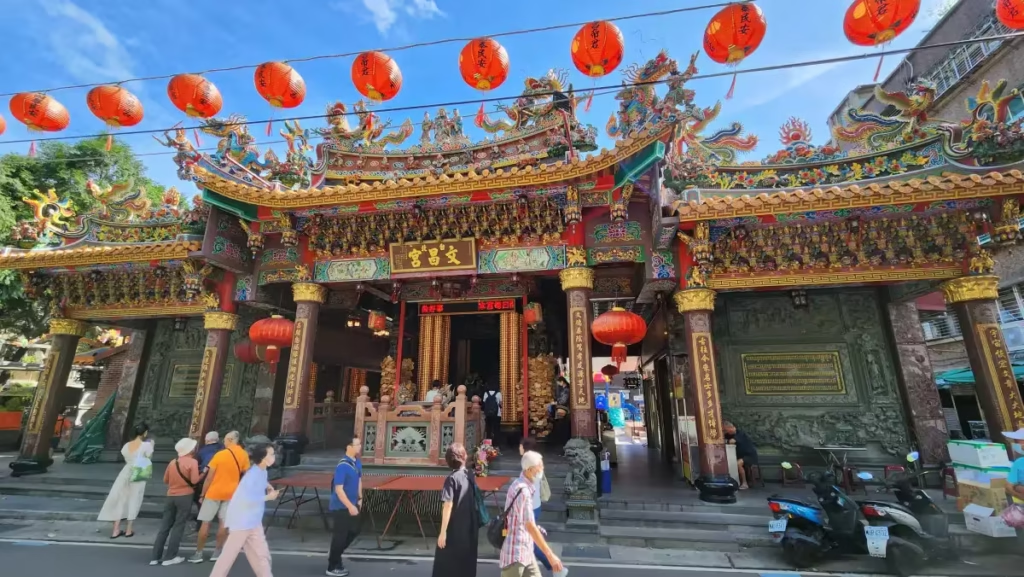
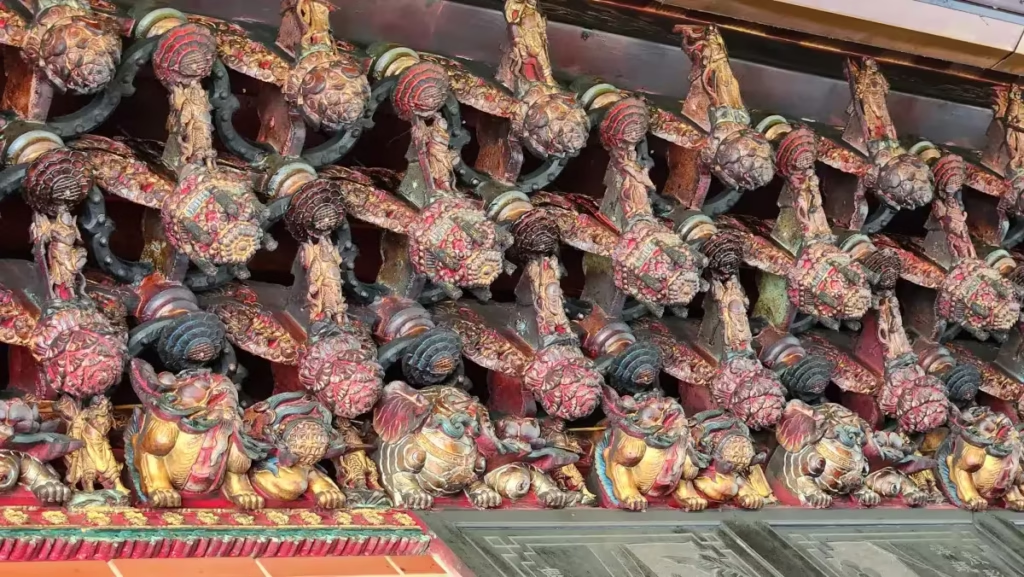
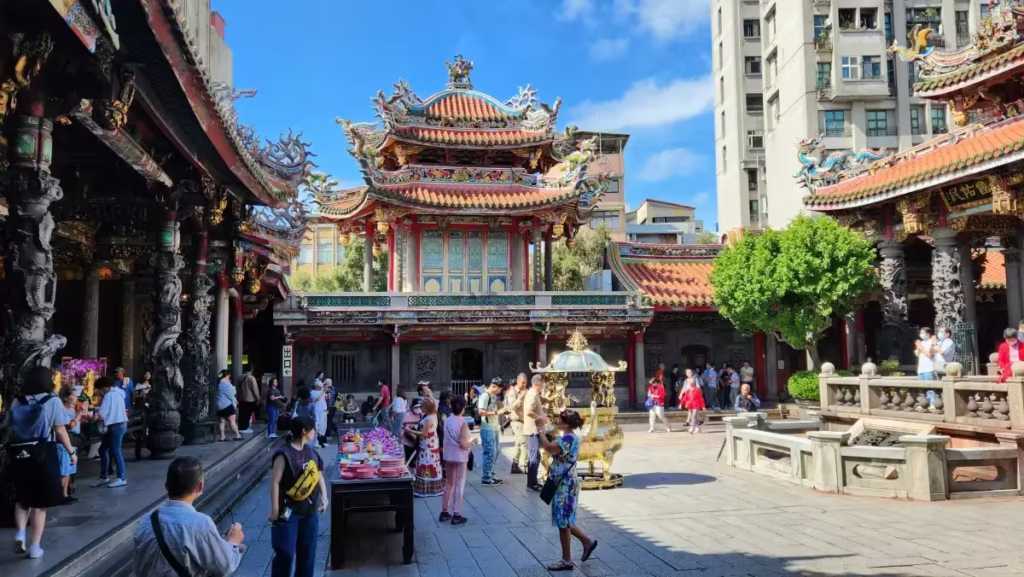
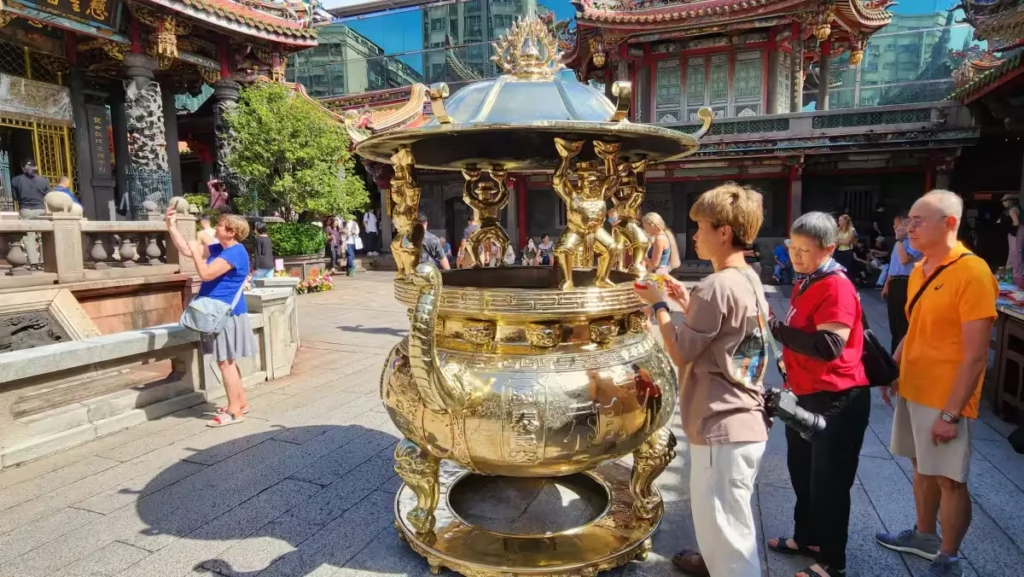
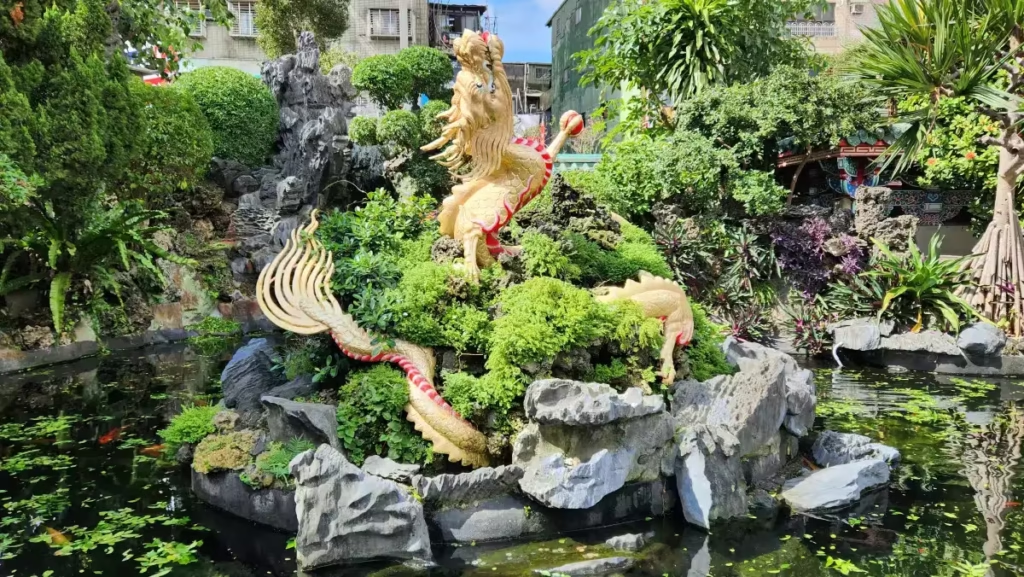
THE BEITOU HOT SPRING
Reaching Beitou is very convenient with the Taipei MRT system providing direct access.
Take the red line, direction Tamsui and stop at Beitou R22.
From there 10 minutes’ walk or at Beitou stop, you can take the R 22a line.
At the exit turn on your right.
It takes about 30 minutes from downtown, making it an easy day trip.
Also around the metro station there is charming streets lined with shops, cafes, and restaurants which worth to explore before or after the hot spring experience.
The history of Beitou as a hot spring destination dates back to the Japanese colonial period in the early 20th century.
The Japanese recognized the area’s natural hot springs and developed it into a health resort.
They built public baths, hotels, and amenities that contributed to its reputation as a spa town
The Hot Springs
Beitou is home to several types of hot springs, including sulfuric, alkaline, and carbonate springs.
The most famous is the sulfur hot spring, known for its distinctive yellowish hue and strong odor, which is due to the high sulfur content.
These mineral-rich waters are believed to have various health benefits, including improving skin conditions, relieving stress, and promoting relaxation.
You can experience the hot springs in several ways.
Public baths, such as the Beitou Public Hot Spring, allow for an affordable and communal soaking experience, while numerous private resorts and hotels offer more luxurious options.
If you want to use the hot spring, be aware of about the proper bathing suit, I recommend to go online to see the restriction.

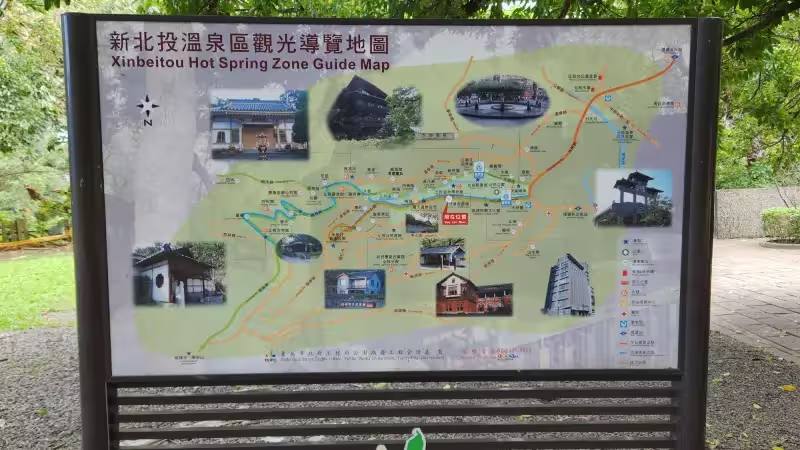
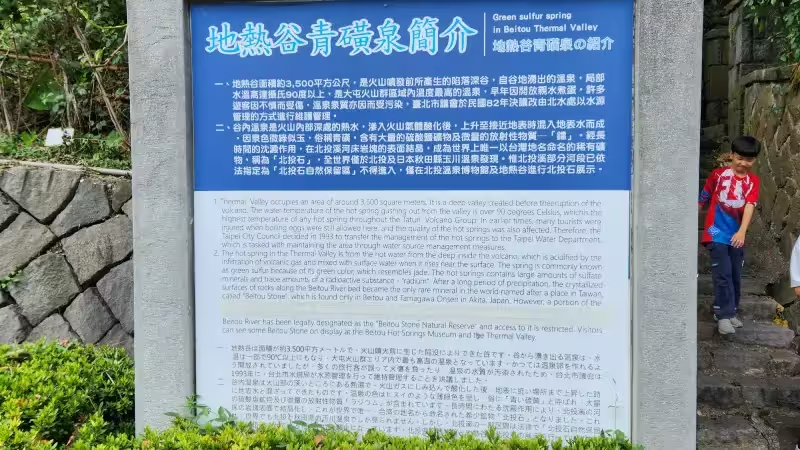
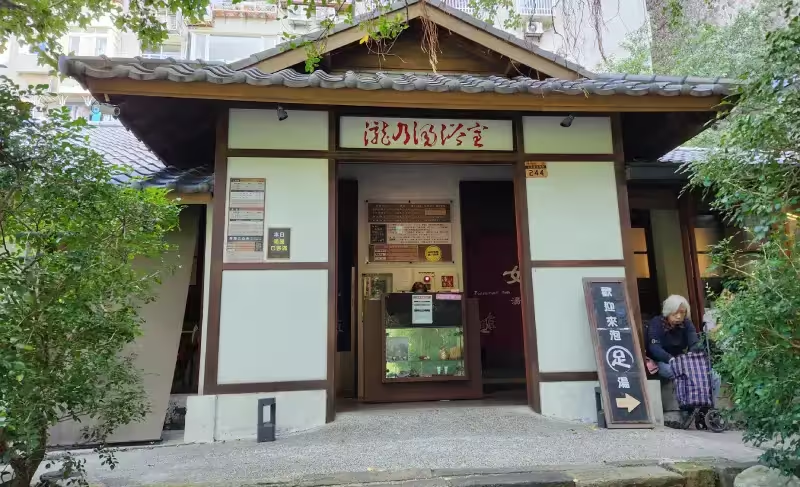
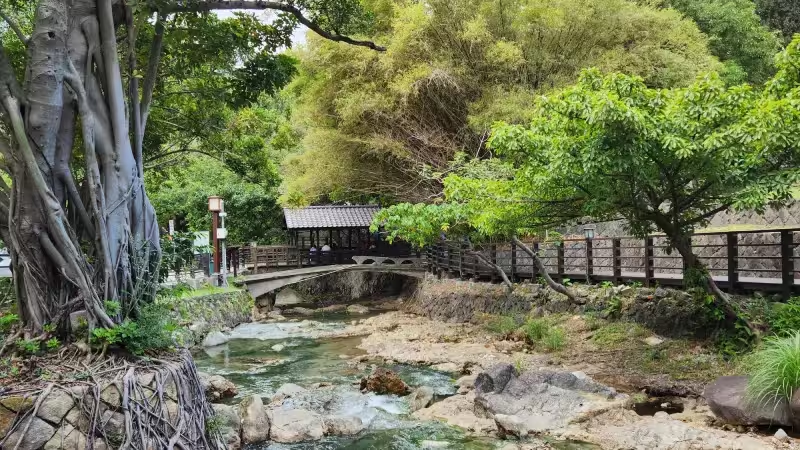
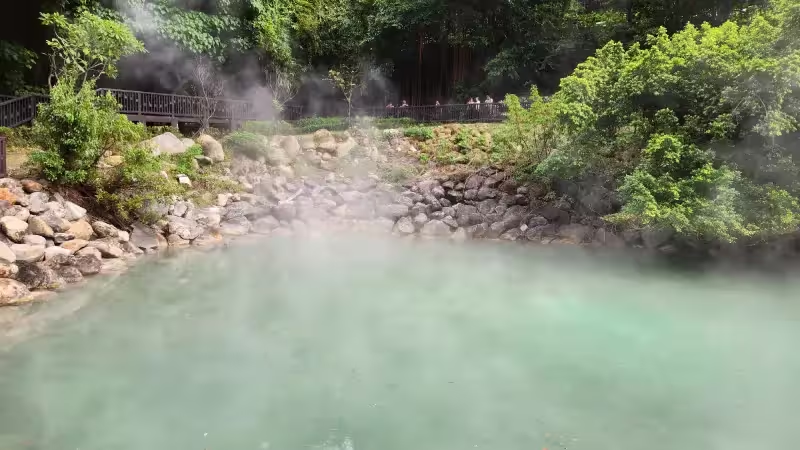
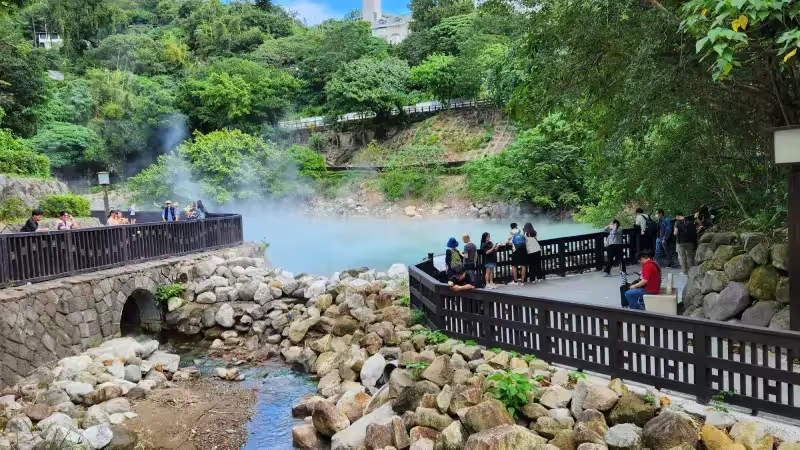
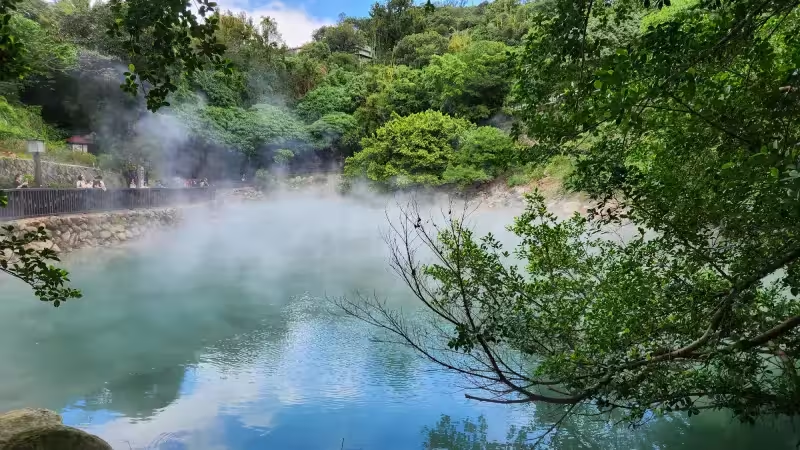
XIMENDING DISTRICT.
To get there take the metro, you have the choice between the green line and stop at G12or the blue line BL11.
Historically, Ximending was a modest market area during the Japanese colonial period in the early 20th century. It transformed into a significant commercial zone post-World War II.
In the heart of Taipei, Ximending is a bustling district known for its lively atmosphere, rich cultural heritage, and vibrant street life.
Often compared to Tokyo’s Harajuku, Ximending is a popular destination for both locals and tourists, particularly the younger crowd.
With its unique blend of modernity and tradition, Ximending offers an unforgettable experience for anyone who wanders its streets.
Whether you’re shopping for the latest fashion trends, savoring mouthwatering street food, or immersing yourself in local art and culture,
Ximending promises an exhilarating experience. Its unique character and lively ambiance make it a must-visit destination for anyone exploring the dynamic city of Taipei.
One of the main attractions of Ximending is its eclectic shopping scene.
The district is lined with an array of shops, from trendy boutiques to quirky stores selling unique local crafts.
The iconic Red House, a historical building that once served as a market, now hosts a variety of artisan shops, galleries, and performance spaces, showcasing local talent and creativity.
Ximending is also renowned for its vibrant nightlife. The streets come alive after dark, with numerous bars, clubs, and night markets.
The area is particularly popular for its street performances, where artists showcase their talents, ranging from musicians to dancers, providing a lively backdrop for visitors.

